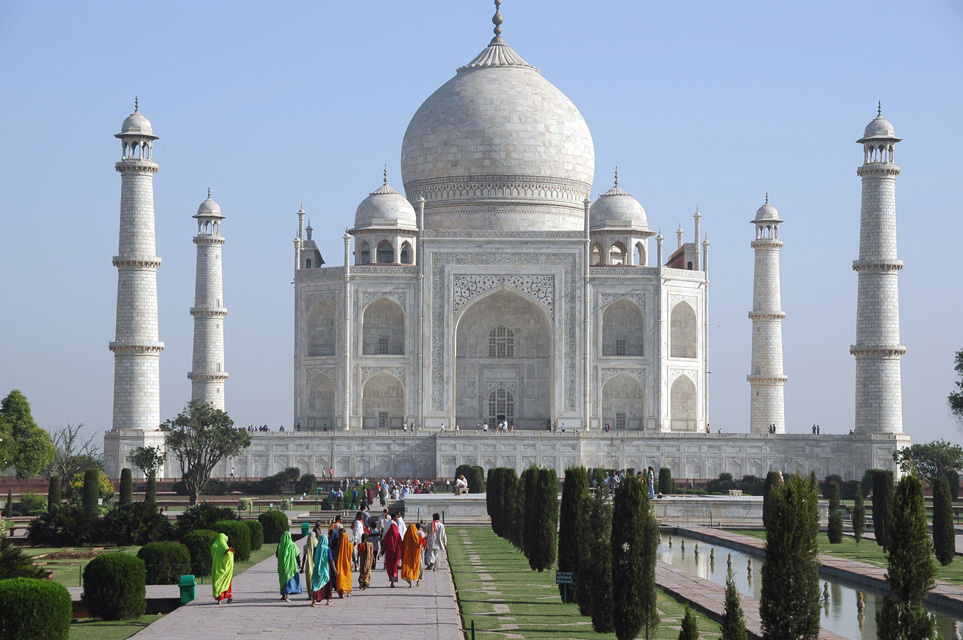
Taj Mahal India - Located at Agra in Uttar Pradesh, the Taj Mahal is one of the most splendid masterpieces of architecture in the world. It was Emperor Shah Jehan who ordered the building of the Taj Mahal, in honor of his beloved wife, Arjumand Banu who was later known as Mumtaz Mahal, which means, the Distinguished of the Palace. One of the greatest monuments of India has been listed amongst the eight wonders of the world. This monument was built in the name of love and devotion. Do you know which is this grand Mughal monument situated in the heart of India? It is the Taj Mahal. It is considered to be one amongst the eight most majestic historical structures of the world. This white marble structure was the Mughal emperor, Shah Jahan’s, gift for his dead wife – Mumtaz Mahal. He loved his wife so much that he ordered for the best of artisans to create a design as there has never been, and something that cannot be replicated. Having rejected hundreds of designs he finally approved of this blue print. He is said to have personally monitored the construction of this building.

In 1983, this grand monument was announced by UNESCO to be one amongst the UNESCO World Heritage Sites. It was cited by the authorities as: "The jewel of Muslim art in India and one of the universally admired masterpieces of the world's heritage." And thereafter it attained global fame as one of the seven wonders of the world.
Between to two to four million tourists visit Agra, every year, to see this structure. World leaders ensure that visiting this global tourist spot is a part of their plan when visiting India. On her last visit to India, Lady Diana spent a long time in front of the Taj Mahal, simply admiring its grandeur.
Taj Mahal History :
Mumtaz and Shah Jehan were married in 1612 A.D had 14 children together. The Empress Mumtaz used to accompany her husband in his military campaigns, and it was in Burhanpur in 1630, that she gave birth to her last child, after which she died. So great was the Shah Jahan's love for his wife Mumtaz, that he ordered the building of the most beautiful mausoleum on Earth for her, The Taj Mahal.
As soon as construction work began in early 1630, sculptors, masons, craftsmen, and calligraphers were called from Persia, Ottoman Empire and Europe to work on construction of the Taj.
The architectural complex of the Taj Mahal comprises of five main elements: the Darwaza or main gateway, the Bageecha or garden, the Masjid or mosque, the Naqqar Khana or rest house, and the Rauza or the Taj Mahal mausoleum.
The actual Tomb of Mumtaz is situated inside the Taj. The unique moghal style architecture combines elements & styles of Persian, Central Asian, and Islamic architecture. Most striking are the black and white chessboard marble floor, the four tall minarets (40 m high) at the corners of the structure, and the majestic grand dome in the middle.
On closer inspection, the lettering of the Holy Quran verses around the archways appear to be uniform. The lettering spacing and density has been customized to give this impression to the viewer. The impressive pietra dura artwork includes geometric elements & style, plants & flowers, which are common in Islamic architecture. The level of sophistication in artwork includes a 3 cm decorative element containing more than 50 inlaid gemstones.

